The Need for an Alternative
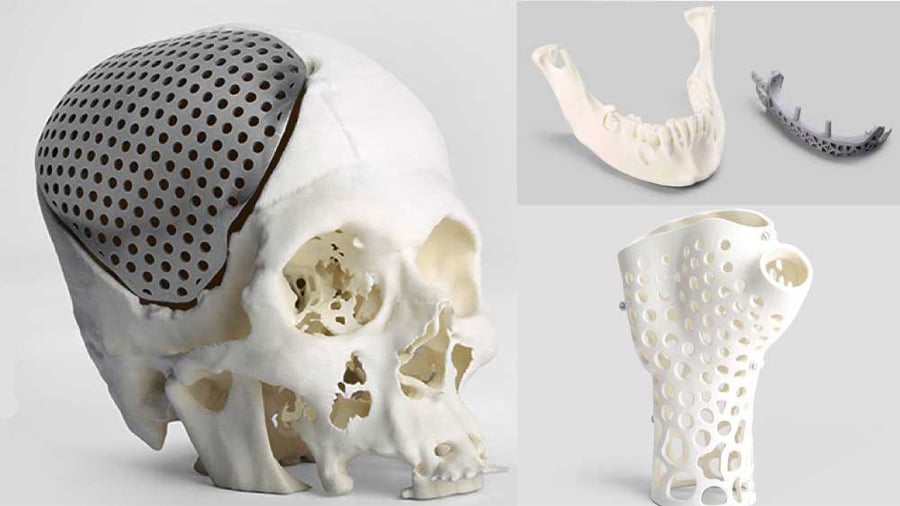
It’s not uncommon for people to break or lose bones due to accidents or disease. As a treatment, doctors implant bone grafts or bits of bone tissue from a donor. Held in place with wires and screws, inplants can help the body regenerate healthy bone structure.
Unfortunately, this process has some evident flaws. First, the bone graft must be cut to fit precisely where the old bone used to be. Second, if metal plates or scaffolding are inserted during surgery, they usually have to be surgically removed later on. Lastly, for those missing a large amount of bone, such as in arms or legs, often the only option is to amputate the limb.
3D printed bones could change all of that by making the process more natural and convenient for the patient. Doctors would no longer have to take a bone graft from another bone or search for a bone donor: They could simply scan the area and model the structure of the new bone.
With the technology of 3D scanning and modeling, every implant could be shaped precisely to the patient’s bone. Speed of production is also important when looking to save a limb, which is another reason why 3D printing is a good candidate for a solution.
Once 3D printed, a bone can then be implanted into a patient. Ideally, the bone graft will dissolve as new bone grows, reducing the need for more surgery. Although such bones can be printed using compounds similar to natural bone, researchers are also looking into printing bones in other materials with special properties.
Project #1: Xilloc CT-Bone

Based in Europe, Xilloc specializes in producing patient-specific implants, including 3D printed bone implants. Based on a CT scan of the patient, engineers design the implants together with the surgeon so that they fit perfectly in place.
The Dutch company is developing a bone-like 3D printing material with calcium phosphate, a major compound found in natural bone. As a result, it will eventually merge with and become part of the patient’s existing bone. The CT-Bone 3D printing material allows implants to emulate the same levels of porosity as real bones.
The process is still in testing and isn’t yet available, but it shows great potential. The pre-clinical study showed that, within 24 weeks, the implant fused with the patient’s bone. Later analysis revealed that bone tissue and even bone marrow were beginning to form in the transplant. While there hasn’t been any news update from this project since 2018, we’ll be keeping an eye out.
Project #2: Hyperelastic Bone
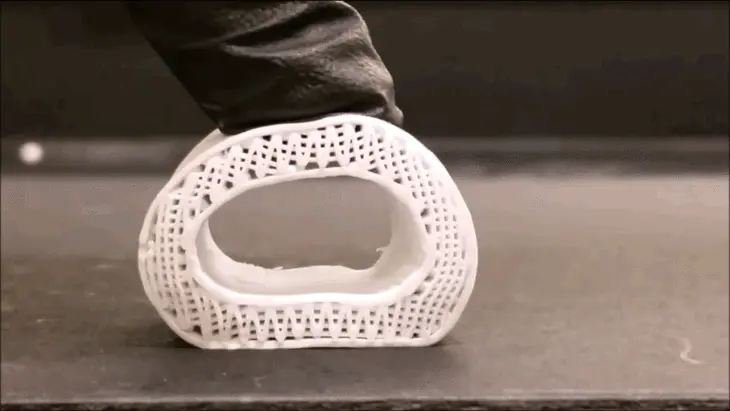
Material scientists at Northwestern University in Illinois have developed a new 3D printable material dubbed “hyperelastic bone” (HB). This flexible material can be very beneficial since it can be cut, rolled, and easily worked with. As a result, the material is straightforward to implant during surgery.
HB is composed of over 90% hydroxyapatite, a compound that lends rigidity to real bone. Combined with a special polymer, this brittle material becomes a flexible but consistent substance. It acts as a scaffold, encouraging the growth of blood vessels and cells with its porosity and absorbance.
The material is quite promising because it would be a cheap solution to the bone transplant issue. It’s affordable to manufacture, can be 3D printed at room temperature, and stores for up to a year. Hospitals in developing countries, for example, could make use of the material without needing an expensive refrigeration system.
In 2019, a study was conducted with living rats with skull defects. HB provided good bone regeneration, with about 74% effectiveness after 8 weeks when compared to other implants using the own animal’s bone (autologous).
Human trials haven’t been conducted yet but according to Dr. Shah, one of the study’s conductors, “Hyperelastic bone has significant potential to be translated to craniofacial reconstructive surgery, where the need for cost-effective bone replacement grafts is enormous.”
Project #3: Bone Scaffold
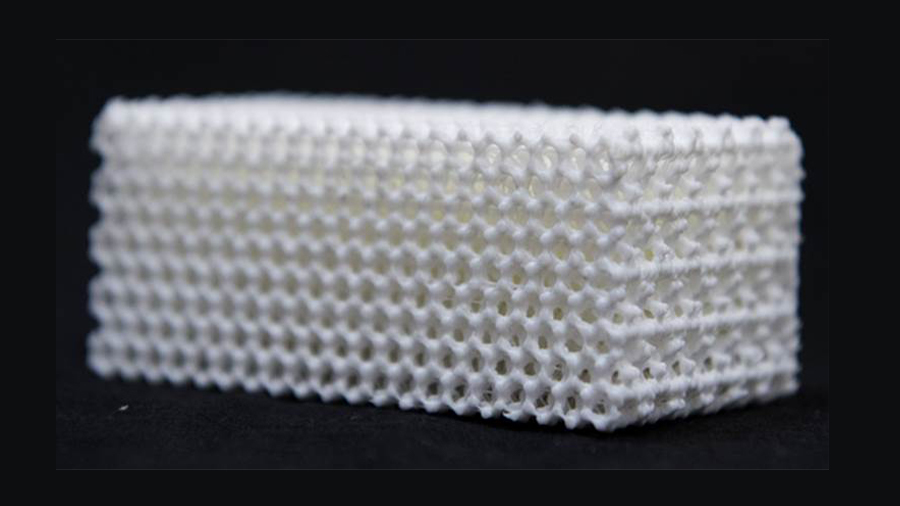
Scientists at New York University are also developing their own 3D printed bones. Their goal is to help those in need, such as children with skull deformations or veterans, who require bone scaffolding.
Scaffolds are materials designed to stimulate the formation of new organic tissues for medical purposes. They provide the physical structure for the tissue to develop, ultimately guiding the cell growth towards the desired shape and form.
Instead of flexibility, the New York scientists focused on optimizing healing by mimicking bone shape and composition. The bones are 3D printed in beta-tricalcium phosphate and then superheated to their final ceramic state. A special coating of dipyridamole is added to the 3D printed part to speed up new bone formation and attract bone stem cells.
Scientists from the University of East Anglia (UK), together with the Animal Health Trust, are developing 3D printed scaffolds to support bone regeneration in horses.
The scaffold structures were produced by a MakerBot Replicator 2 with BendLay polycarbonate filament in a fine mesh. In vitro testings showed very positive results, establishing yet another research path towards bone regeneration in humans.
Project #4: Hip Replacement
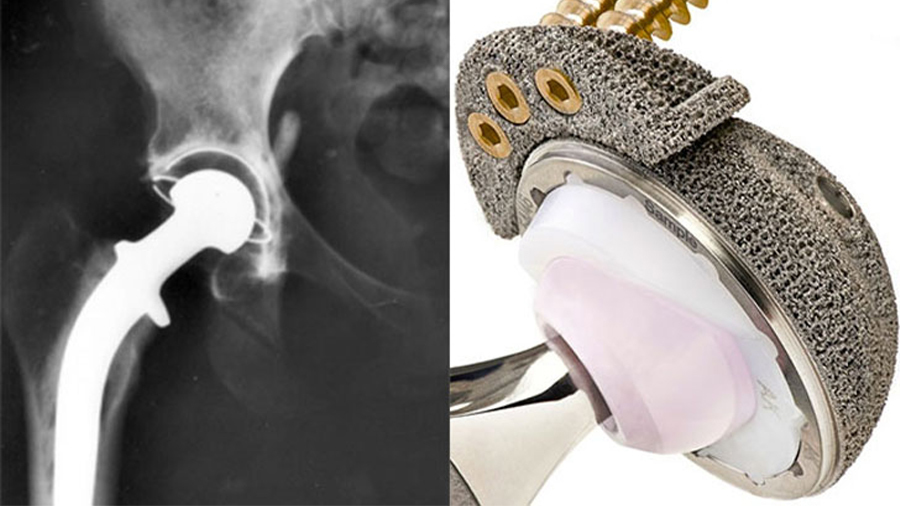
3D printing bone parts is not something entirely new, at least not for hip implants. Back in 2007, Italian surgeon Dr. Grappiolo, together with Arcam (now part of GE) developed and successfully implanted the world’s first 3D printed acetabular component (hip cup) in a human patient.
The Delta-TT cup is a semi-spherical part that accommodates the femoral head, the rotating-ball component that allows much of the leg’s multi-directional movement. The outer surface of the cup attaches to the patient’s hip and anchors the entire implant in place. This intentionally irregular surface 3D printed in metal promotes bone adhesion and stimulates cell growth between these parts.
Now, more than 10 years later, more than 100,000 hip cup implants were produced by the Scandinavian 3D manufacturer’s printers, with more than 600 implanted by Dr. Grappiolo himself.
Regarding durability, the Italian surgeon believes the implant could last the patient’s entire lifetime. Although there’s no way to prove that yet, Grappiolo’s first patient’s implant is still as strong as any other.
Project #5: 3D Bioprinting in Space
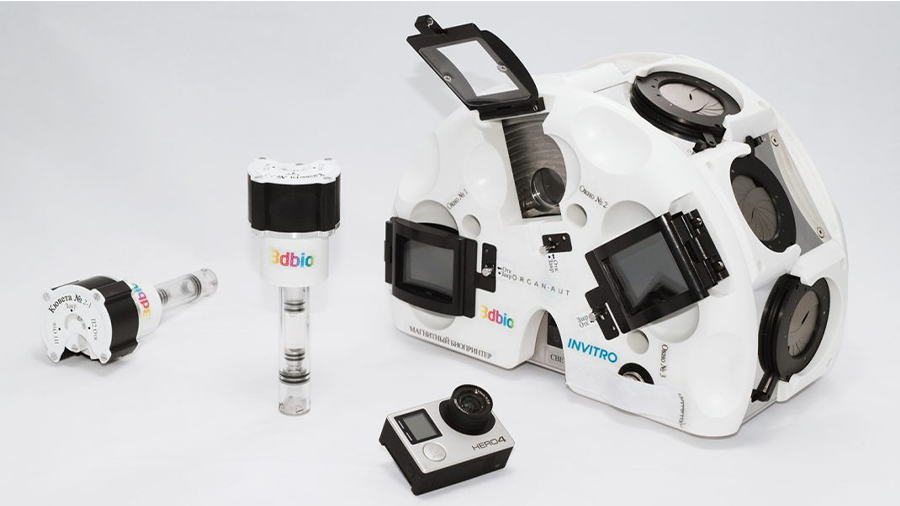
If 3D printing bones isn’t challenging enough, why not try it in space? Well, this is actually what some research laboratories are attempting.
Living in outer space notably affects bone regeneration. Astronauts at the International Space Station have shown high levels of bone degeneration due to longer exposure to microgravity. The bone structure requires constant mechanical stimuli to trigger its reconstruction routine, which is not achieved in a low-gravity environment.
This is why Russian 3D Bioprinting Solutions has been working with bone 3D bioprinting at the ISS. The samples were produced in a special magnetic 3D printer and the ultimate goal is to enable bone production for transplantation on future long-term space expeditions.
According to the company, 2019 saw the very first space 3D bioprinted bone tissue produced using real bone fragments that are now being tested here on earth.
Project #6: Cranioplasty Molds
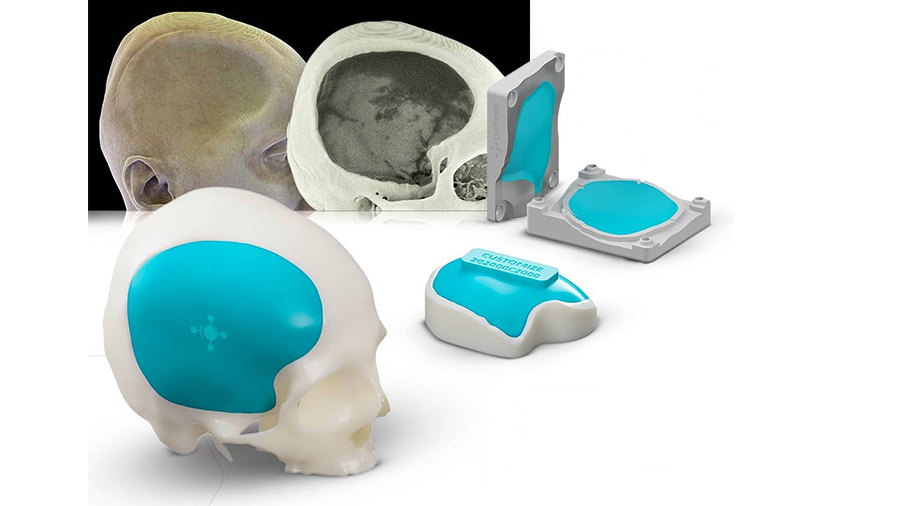
3D printing can assist in bone transplantation in different forms. Rather than producing the actual part that will be implanted, creating molds for these parts can be an even simpler, yet great solution for many cases.
Cranioplasty is the procedure of repairing a patient’s skull by adding an implant, organic or synthetic, mainly for brain protection and cosmetic reasons. This is a well-known procedure in modern medicine, but it does present its challenges.
The materials commonly used are either ceramic (hydroxyapatite) or polymeric (PMMA). These medical-grade materials are usually in powder form and require sintering with high temperatures for acquiring the proper strength after shaping. The implants are modeled during surgery and the sintering usually occurs already in the patient’s skull.
The biggest issue here is that the high temperature necessary for sintering can be very harmful to the unprotected patient’s brain. This is where 3D printing comes to hand.
With the patient’s CT scan, the implant is custom-modeled by surgeons so a mold can be 3D printed in a polymer. The actual implant is then manufacturer previous to the surgery using the molds, avoiding both the excessive heat and also reducing the procedure’s overall duration.
This is an incredible yet cheap solution that’s being used across the globe, most notably in Europe, India, and Brazil. Very inspiring!
Lead image source: Xilloc
License: The text of "3D Printed Bones: The Most Jaw-Dropping Projects" by All3DP is licensed under a Creative Commons Attribution 4.0 International License.
